We all know that the Philippines is unique, and it has been since the dawn of time; leaving the islands with some quite incredible creatures.
Both on land and in the crystal-clear waters, so many of the animals and fish cannot be seen anywhere else. But care is needed; many continue to be under the threat of extinction.
For example, there are 895 species of butterfly fluttering around the Philippines – one of the highest concentrations in the world. It has also been discovered that the island of luzon has more unique mammals than any other place on earth.
Sadly, more than 120,000 hectares of the country’s forest are lost each year due to deforestation – adding further pressure to the nation’s wildlife.
It has been estimated that at current rates of deforestation, the Philippines will have no viable jungles left by the year 2036 – which may seem a long time away, but is just a blink of an eye in environmental terms.
The biggest Eagle in the world – the Philippine Eagle
The Philippine Eagle has been listed as endangered for some time. Often referred to as the ‘monkey-eating’ eagle, it is one of the largest in the world.
This imposing bird has a highly arched and powerful bill – giving it the ability to chomp its way through civet cats, flying lemurs and, as the name suggests, even monkeys.
Today it’s estimated that that only 300 survive in the wild, mostly due to loss of habitat. Once a common sight in Samar, Leyte and various other regions of the Philippines – the magnificent bird is now only seen on the island of Mindanao.
Former president Fidel Ramos made the eagle the national bird of the Philippines in 1995 – hopefully adding impetus to preserve this king of skies.
The (not really) Flying (not actually a) Lemur – the Kagwang.
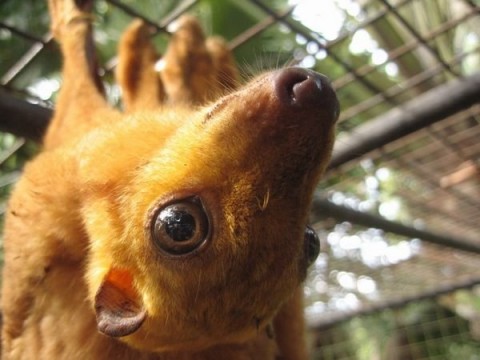
Although the flying lemur has wings, it can only glide for about 100 yards in a single leap. The creature has a head resembling a dog, yet has a body similar to the flying squirrel.
Known by the people of the Philippines as a kagwang, zoologists call these animals the Flying Lemur, even though it doesn’t really fly, and it’s not actually a lemur.
Despite their gliding skills, they are often prey to our old friends the Philippine Eagle.
The one and only Philippine Tarsier.
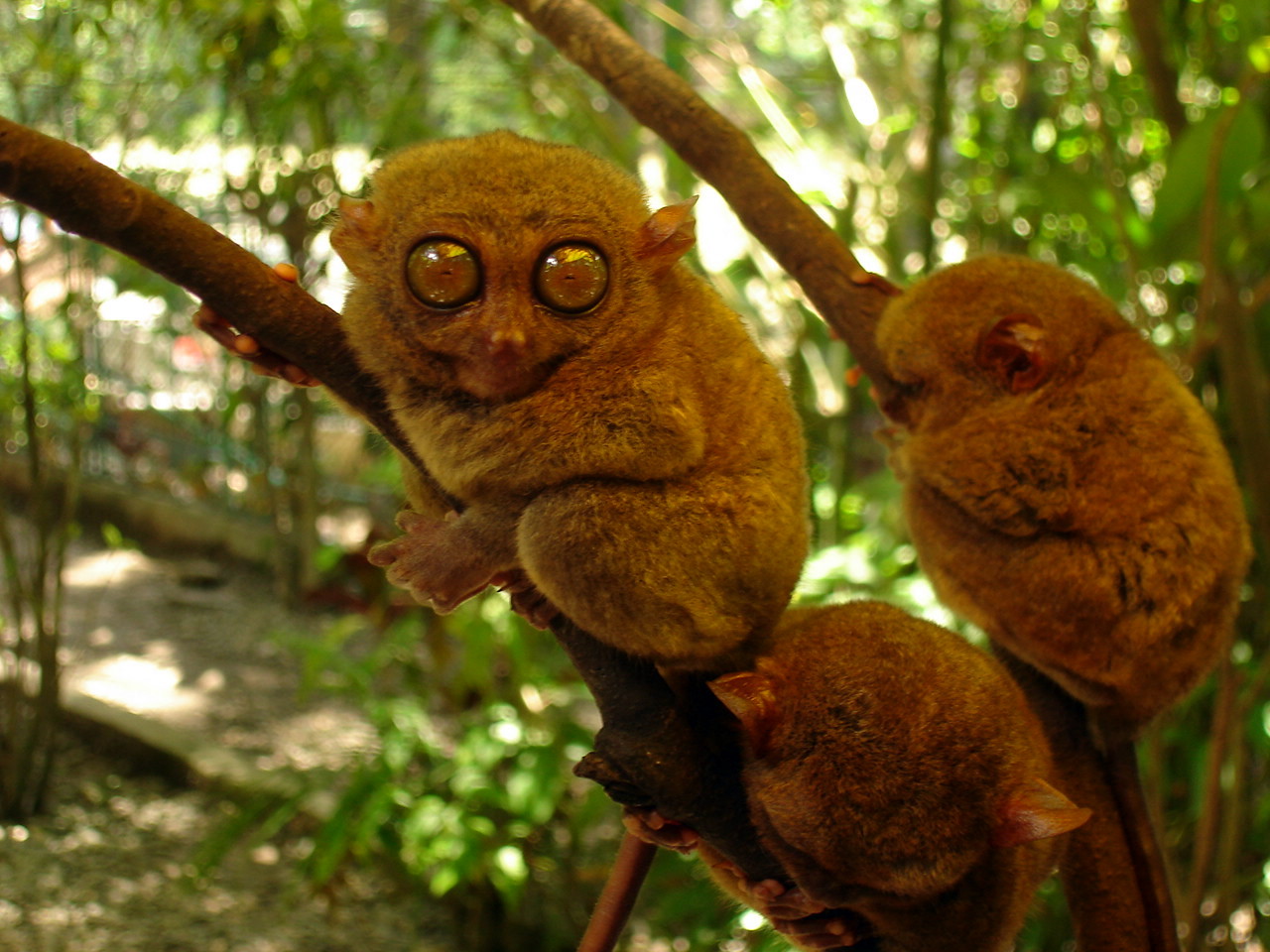
Noted as one of the smallest primates on earth, the Tarsier is unique in so many ways it’s simply amazing.
To begin with, it’s one of the oldest living land species in the world, having survived for 45 million years.
It is also listed in the Guinness Book of World Records as having the largest eyes, in proportion to its body, of any animal.
Often known as “The World’s Smallest Monkey”, it actually isn’t a monkey at all.
Fully grown, this species reaches the size of an adult man’s hand. It is believed that in the wild they can live for up to 24 years, but in captivity they rarely live beyond ten.
The Bamboo Bat
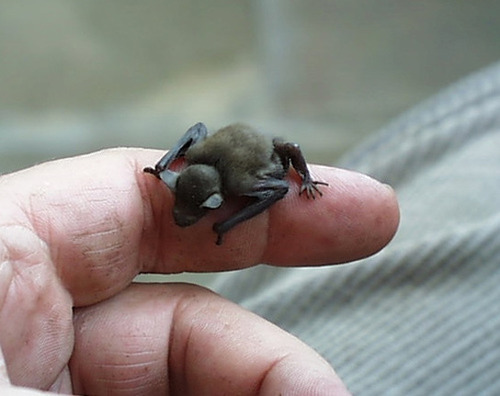
The Philippines is home to an amazing 56 species of bats, even after a number of types have already become extinct.
The Philippines also holds three world records relating to bats: The largest gathering of Fruit Bats (more than two million) in the Montford bat caves in Samal; the world’s largest bats, the Golden Crown Flying Fox; and the smallest bat, the Bamboo Bat.
Weighing only 1/20th of an ounce, the bat is the size of a large bee when it is born and is one of the smallest mammals on earth.
The Mouse Deer of Balabac Island
The world’s smallest hoofed animal, the Philippines Mouse Deer is found on Balabac Island in the furthest southern reaches of Palawan.
Known by locals as the pilandok, this little gem stands at only 40cm to the shoulders.
Contrary to its name, the tiny creature is not a member of the deer family, but rather to a class known as the chevrotain family.
A diet of leaves, flowers and vegetation is the normal intake of this unique little animal.
Exact numbers of these creatures are not known, but they are considered threatened due to people wanting them as pets, human consumption (the meat is considered a delicacy) and loss of habitat.
The Palawan Bearcat – a most unusual Civet Cat
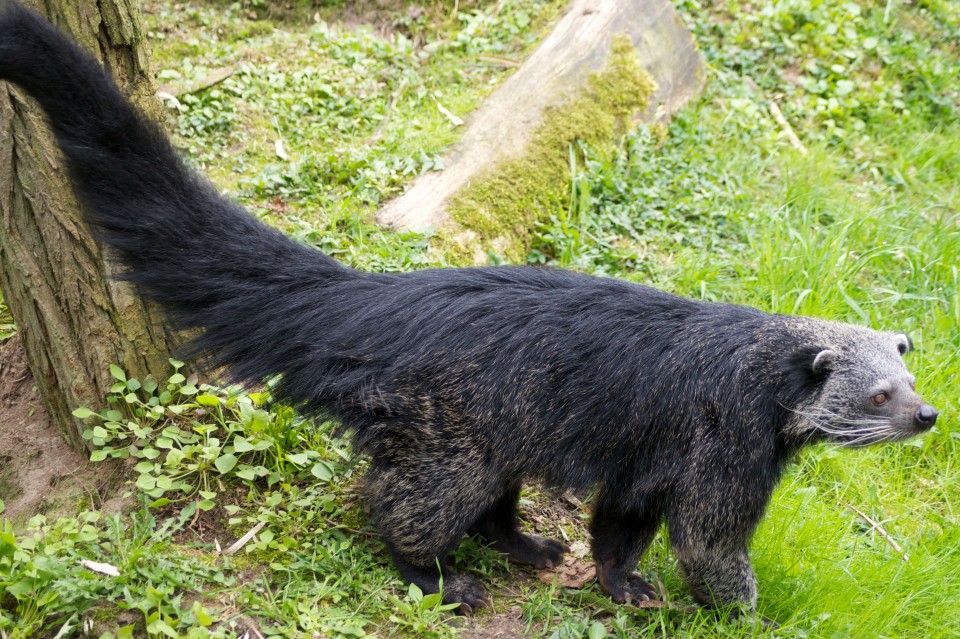 Natives call this creature the binturong, others call it the Malay Civet Cat – and it’s actually a bear, not a cat at all.
Natives call this creature the binturong, others call it the Malay Civet Cat – and it’s actually a bear, not a cat at all.
Its body and tail are often the same length, reminding many of the same in the civet cats seen in the Philippines as well.
Often hunted for it’s thick black fur, hunters use the hide to make clothing and caps.
A nocturnal animal, it hides in the leaves of trees and climbs by using the strength of its long tail.
The Bearcat is one of the largest animals to roam the Palawan region, and while it may look cute, it can become extremely aggressive if cornered.
Although its numbers have been decreasing for years, it’s believed the Bearcat has been recently gaining in numbers.
The Calamian deer of northern Palawan .
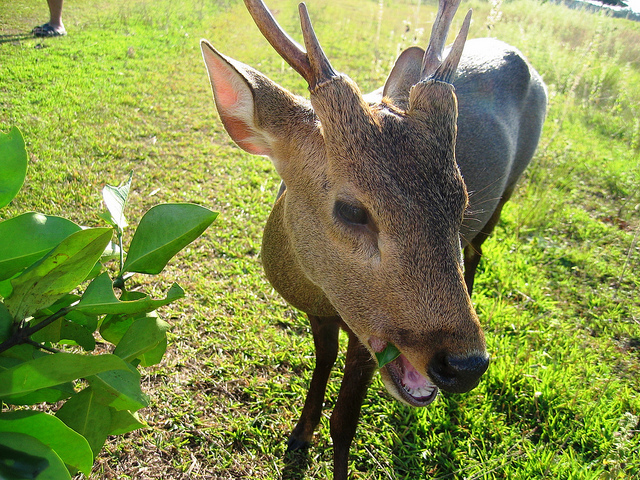
The “hog deer” is the only breed of its kind in the world. Living in the Calamian Islands, they are distinguishable from other hog deer due to their unusually long legs.
The species has been classified as being endangered due to over-hunting. Today it is banned from trade and a conservation programme has been put into place to protect it.
The Whale Shark – the world’s biggest fish.
The Whale Shark, or as the natives call it butanding, is one of the mightiest creatures of the sea.
Often seen in the regions around Donsol, Sorsogon, from November to June, dozens of the fish visit regularly (the highest concentration in the world).
Once killed for its meat, the whale shark was considered a nuisance as it was accused of capsizing fishing boats and destroying nets.
Today the Butanding Festvial is held annually to celebrate this awesome creatre. Once nearly extinct, today these gentle giants are now a huge draw for scuba divers and other tourists.
See also: Luzon has the most unique mammals in the world

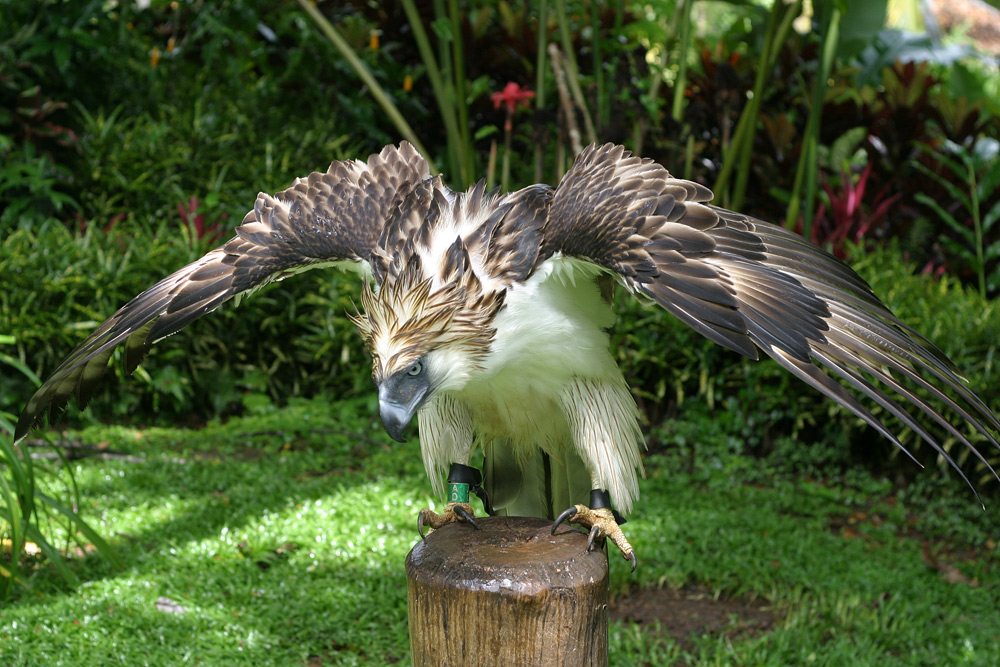
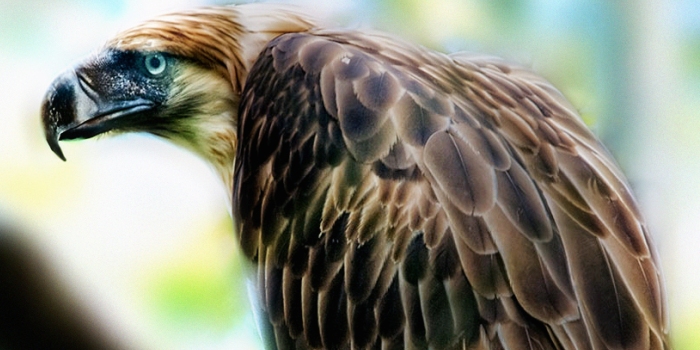
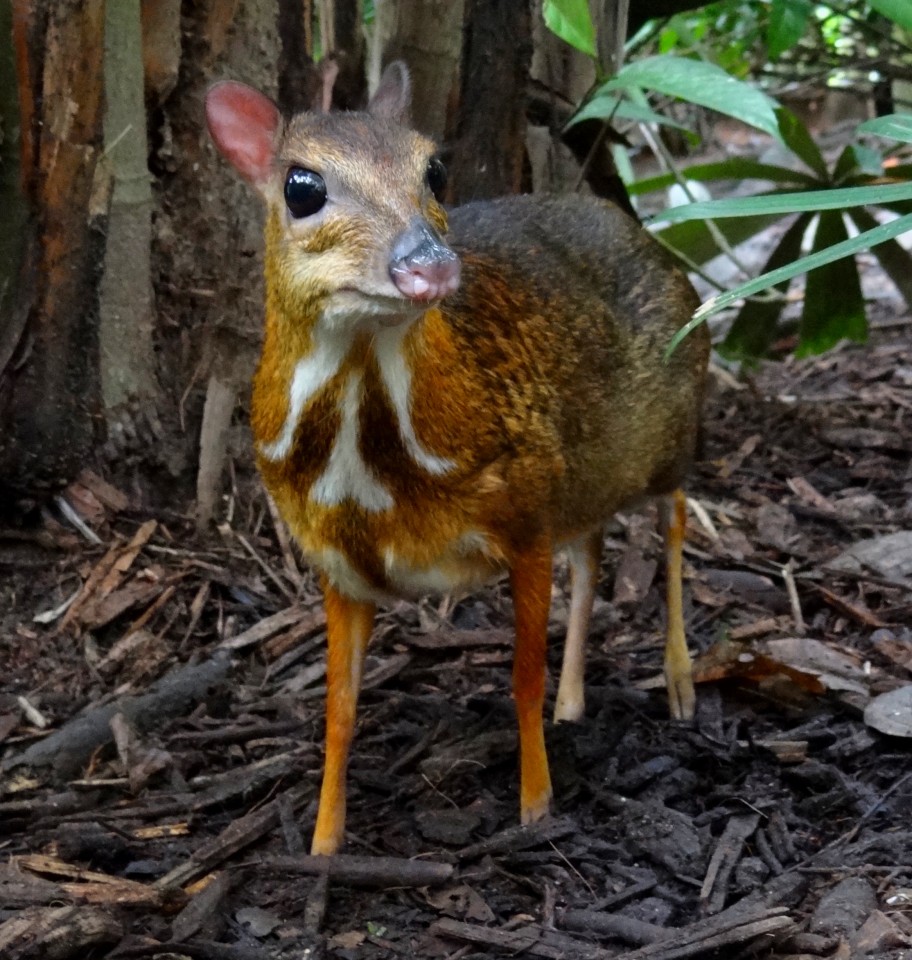
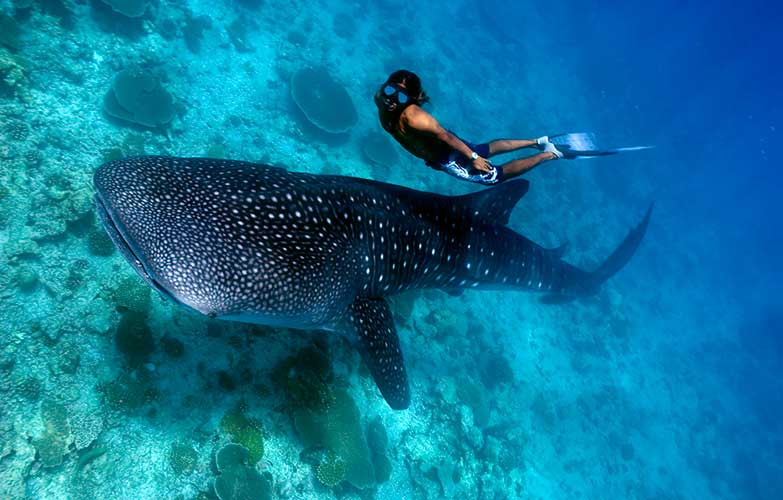
Comments are closed.